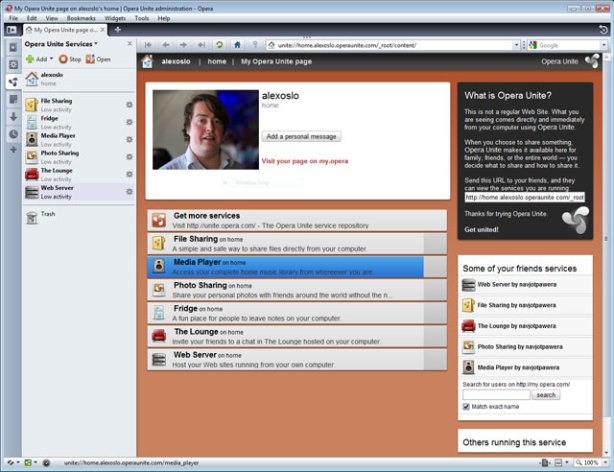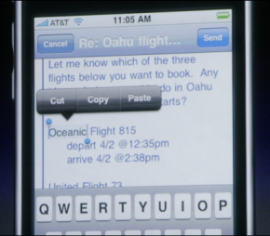After having read today about the many advantages of using an Android phone rather than the iPhone (and yes, there are many arguments for the opposite case 😉 ), the Lifehacker post below could make a switch decision easier.
It may sound too good to be true, but it’s actually easy to sync an Android phone with your Mac just as seamlessly as an iPhone could. Even better, the majority of syncing is done in the background for you, constantly, through Google.
The key to headache-free syncing between Mac and Android is to use Google’s cloud services as middle-men between the two. Your phone’s already designed around using Google for its mail, contact and calendar data, so we’re just going to show you how to sync those down to your Mac, which takes little to no effort. Once you’ve got it all set up, the only reason you’ll ever have for plugging your Android phone into your Mac will be to sync music (and if you really want to, you can sync that over Wi-Fi too).
Setting up Gmail in Mail
If you don’t use an email app on your Mac, but instead just use a browser to access a Gmail account, then you don’t need to worry about Mail at all. If you do use the app, you’ll be happy to know that syncing it with a Gmail account is so simple that it’s almost automated.
Simply open Mail’s preferences, click on Accounts in the top bar, then click the “+” symbol at the bottom-left of the window. After that, it’s as simple as entering your name, email address and login information. Mail automatically knows what settings to choose for Gmail.
Syncing Your Contacts with Mac’s Address Book
Open the Address Book, then open its preferences and click on Accounts in the top bar of the window. You should see an account called “On My Mac Local”, which should already be selected. To the right of that is a check-box labelled “Synchronize with Google”. Just check the box!
Afterwards, you should see a small sync icon in your Mac’s menu bar. Normally, that sync indicator would be used by MobileMe, but it’ll also work for other accounts. If you click on it, a menu will appear and you’ll have the option to “sync now”. Click that, and Address Book will begin to fill up with entries from your Google Contacts within a few seconds. Simple as that, your contacts are synced.
Syncing Your Calendars with iCal
In iCal, open preferences, then click on Accounts in the top bar. Click the “+” symbol at the bottom-left of the window. Leave Account Type set to “Automatic”, then enter your Gmail login information. After you click Create, iCal will sync your Google Calendar automatically. If you use reminders or alerts of any sort in Google Calendar, you’ll also want to click the Advanced tab in iCal’s preferences, and check the box marked “Turn off all alarms”. Otherwise, you’ll be receiving double reminders.
Syncing Your Music with DoubleTwist
If you’ve got a Google Music or Amazon Cloud Drive account, you can already upload your iTunes library and stream the music to your phone. Since not too many people use those services yet, and since they’re a different type of syncing than what we’re after today, we’ll use previously mentioned DoubleTwist.
DoubleTwist is called “iTunes for Android” for a reason. Not only does it look like a miniature iTunes, but it performs most of the same functions, only for your Android phone instead of an iPhone. With DoubleTwist, you can sync music to and from your phone, whether it’s song by song or a whole playlist. It’s fast, simple and free (which we like).
There’s also a DoubleTwist music player app available for Android, but it’s not required to play anything that you sync using the desktop app.
The DoubleTwist desktop app for Mac doesn’t only handle music, you can sync photos and videos just as easily with the built-in media browser.
If you really want to one-up your friends with iPhones, you can buy the DoubleTwist AirSync app to perform all your syncing over Wi-Fi. It costs $4.62, but it’s pretty fancy-pants to be able to sync without a cable. Note that it’ll definitely be slower, though, and is probably a bigger drain on your battery.=
Sync Your Photos with Picasa Web Albums

Last but definitely not least are your photos. We’re going to use Picasa Web Albums, since it syncs beautifully with Android. Many Android phones should be able to sync with Picasa out of the box. Just double check that all your Google services are set to sync by checking in your phone’s settings under Accounts & Sync, and tapping on your Google account.
You don’t need every Google service on the list to sync if you’re not planning on using them. Google Books, for example, may be listed. If you don’t plan on using it, just leave it unchecked. It won’t affect anything when syncing with your Mac.
Unfortunately, this is only really available to users with phones running stock Android. Users in HTC Sense or other manufacturer UIs might notice that there is no Picasa entry in Accounts & Settings, but there will likely be a Flickr entry. In this case, you have two options: you can download the stock version of the Gallery app and install it on your phone, which will let you sync Picasa, or you can sync with Flickr, which is also iPhoto-friendly. Note that if you want to install the original Gallery app, you’ll need an account at XDA and you’ll need to check the “Unknown Sources” box in Settings > Applications on your phone.
On the Mac side, you can either use Google’s Picasa desktop software to sync Picasa albums, or you can use the iPhoto to Picasa uploader. This iPhoto plug-in which will let you upload and manage Picasa albums by choosing File, then Export. If you’ve chosen to sync with Flickr, you can just hit the Flickr button in the bottom right hand corner of iPhoto’s window to send any album to your Flickr account — it’s already built-in.
Apple has actually made it very easy to sync your data with Google, so the setup should take you very little time, and by the end, you’ll have all your favourite Mac apps syncing data right to your phone. From here on out, your mail, address book, calendars and music libraries should look the same on both devices, without you having to lift a finger. Got your own tricks for keeping your Mac and Android phone in sync? Let us know in the comments.






















![Reblog this post [with Zemanta]](https://i0.wp.com/img.zemanta.com/reblog_e.png)